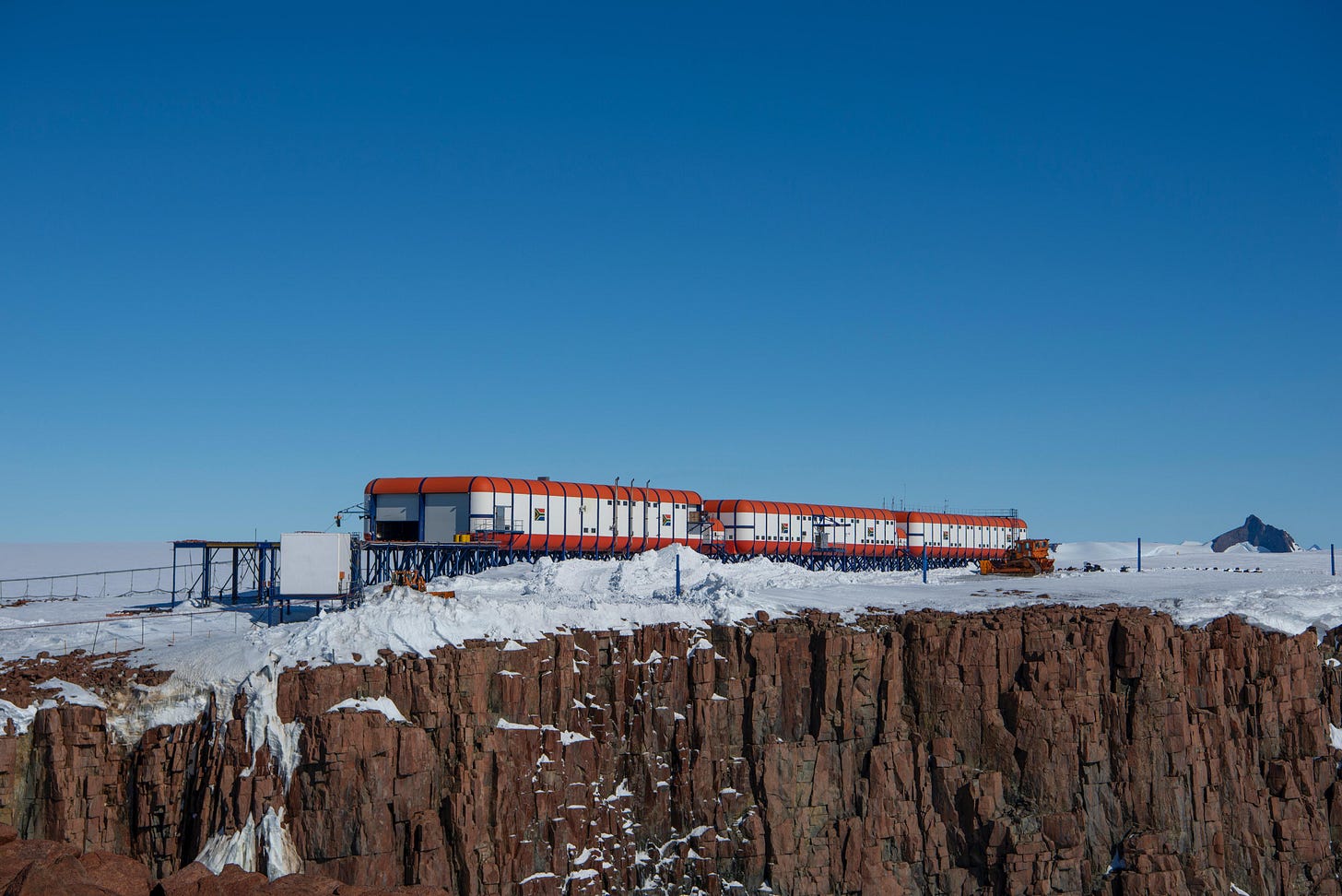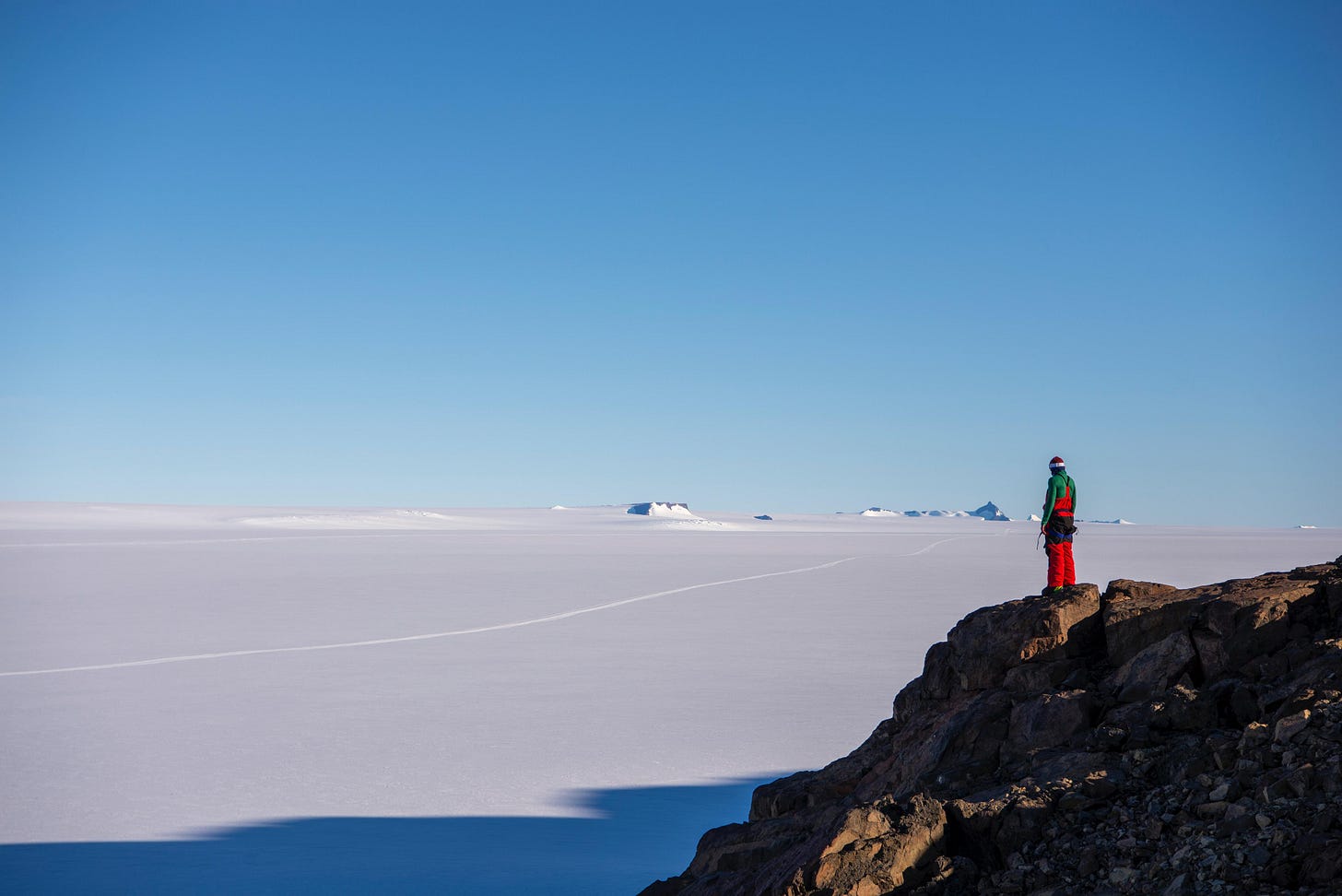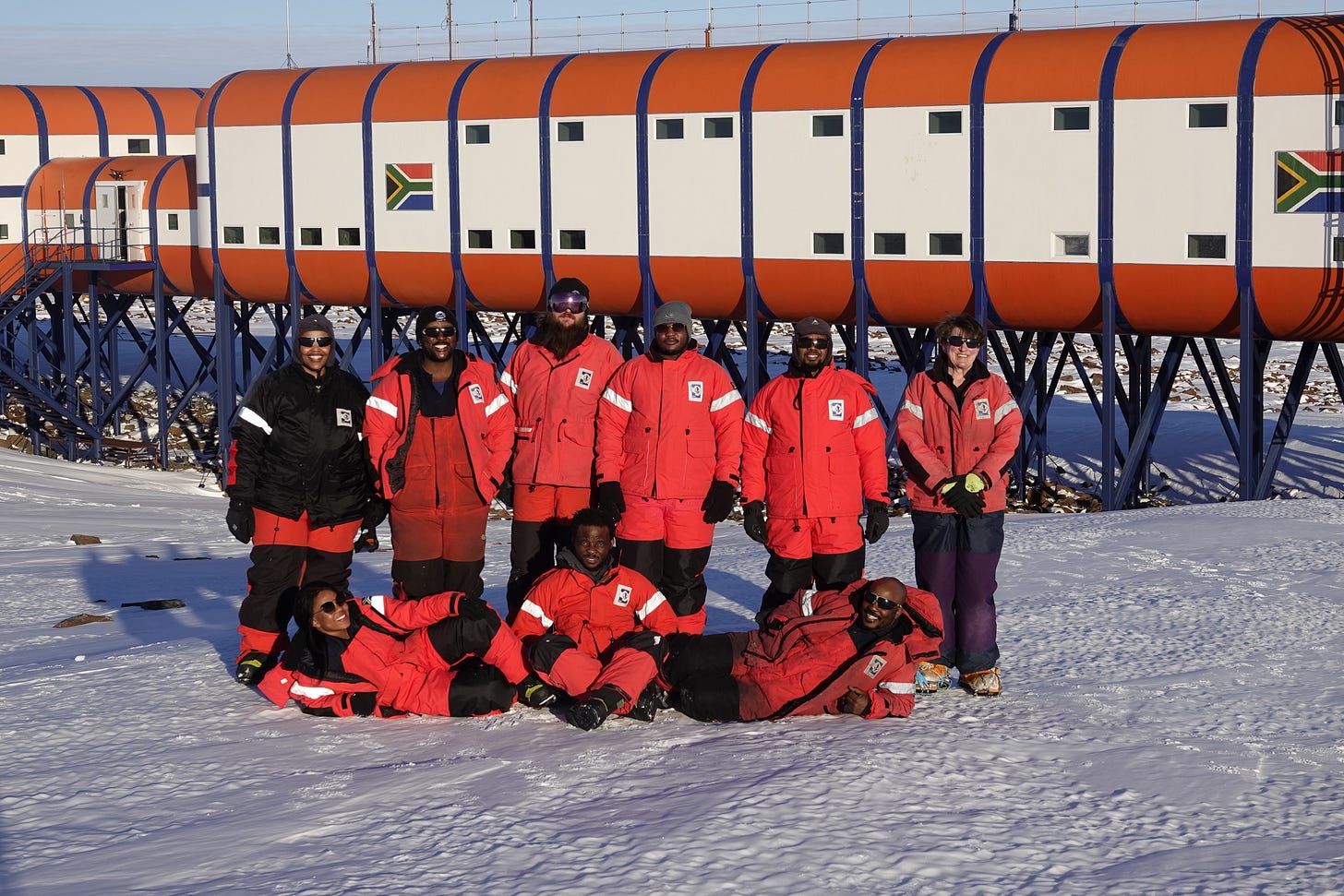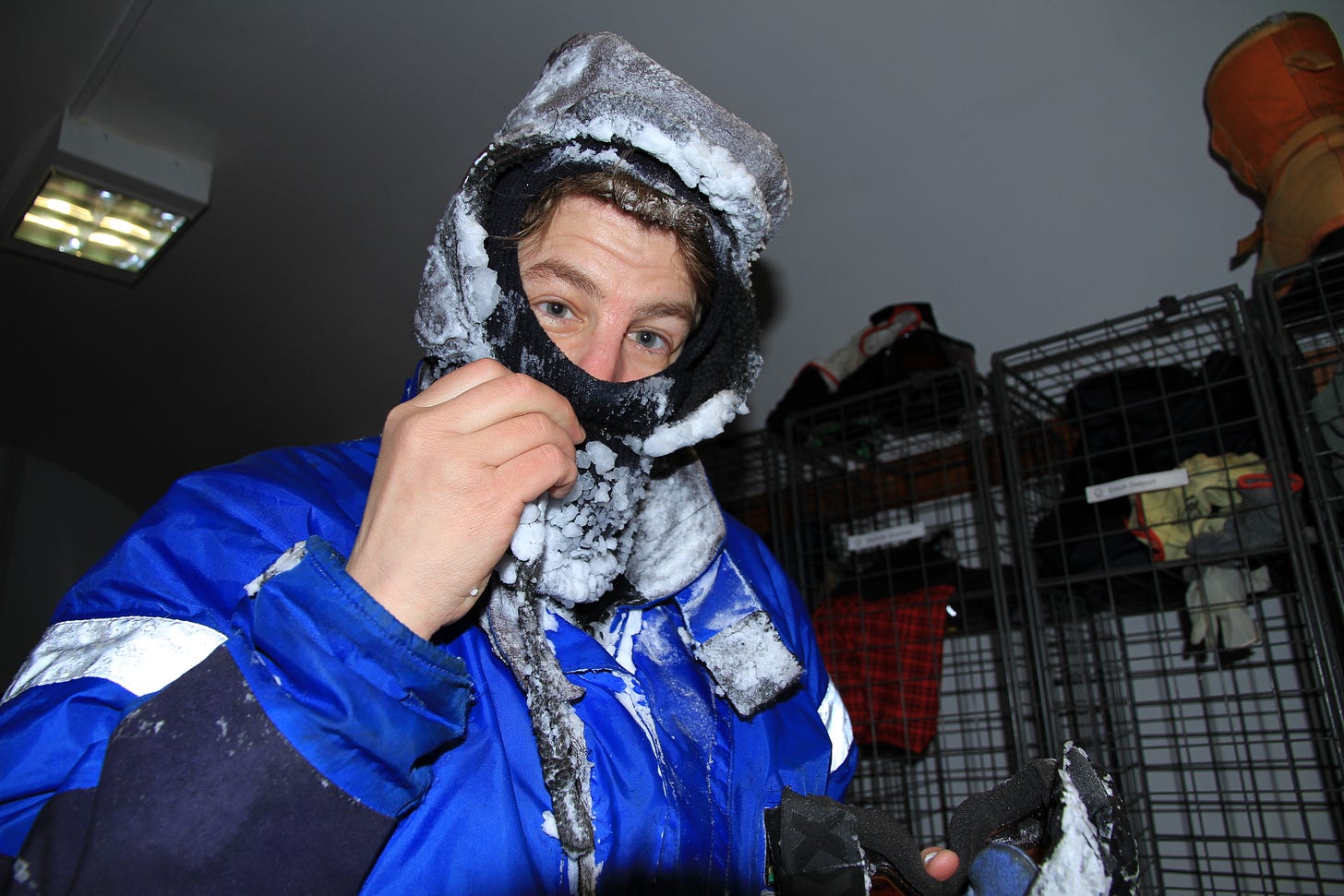Life on the southern ice: a medic’s story
The story of Dr. Abigail Paton, who spent an eighth of her life as a doctor in Antarctica.
Dr Abigail Paton first felt a calling to work in Antarctica in 2011 when she was 42 years old. Since then, she’s spent seven gruelling winters (whole years, not just winter months) in the frozen south. Her experience as a medical doctor and team leader is unparalleled having managed everything from routine health concerns to the most severe medical and interpersonal challenges.
In a realm of howling white winds, a red building sits idly on an Antarctic cliffside. Here, where life is scarce, nine humans live out the year including engineers, mechanics, technicians and a medical doctor. They live, eat and sleep in three linked double-story modules containing bedrooms, a kitchen, a mess hall and even a bar. They maintain the base together and look after each other. Most of the time, the medical doctor treats general aches and pains, but anything more serious makes this job one of the most extreme on Earth.
This is the South African research base (SANAE IV) where 56-year-old Abigail Paton chose to practice her stills as a medical doctor. The place hooked her so strongly that she just completed her seventh tour. Known as over-winterers, most personnel just take on a one-year assignment in conditions that are as psychologically challenging as they are physically hostile. But practicing medicine here is both routine and potentially extreme, demanding adaptability, resourcefulness, and the ability to integrate fully into a small, isolated team.

“When things go wrong, then you're on your own, completely” says Dr Paton when describing the extreme isolation of working in Antarctica – “(you have) reasonably limited resources and no trained personnel around you.”
Dr Paton is by far the most experienced over-winterer at SANAE IV (the South African National Antarctic Expedition base). With a background in orthopedics, her skills made her a worthy candidate for the extreme conditions of Antarctica, where injuries were common among the team of young healthy adults. She made the deliberate choice to become an expedition doctor, where she enjoys the experience of dealing with complicated medical cases.
How bad can it get?
“It was an extra-ordinary co-incidence that I found one of the team supine on the floor, his ankle-bone sticking through his skin. He had slipped and fallen moments before. That was challenging, all right,” recalls Dr Paton, “I had to wash, close and set the fracture and simultaneously instruct one of the team, co-opted as an anesthetist, as to what medication needed to be injected, and when. Most of the team was in theatre with me and it was an incredible experience, both scary and bonding.”
Dr Paton saw medical cases ranging from common skin issues to rare, emergency situations. Aside from fractures that pierce the skin (which can be dealt with in house), she dealt with a severe blood pressure issue, and another incident that required a medical evacuation in a storm whilst she had a fractured wrist herself.
On a psychological level, sleep-related disorders such as sleep inversion – flipping your sleep hours between night and day – were common. “By the time you get to winter, people have gone into psychological hibernation. It's not an unhealthy state. In fact, it's a coping mechanism. You basically just slow down and ask far less of yourself,” explains Paton. Winters in Antarctica are tough, as the team lives in complete darkness, mostly confined to the base, as storms worsen in the winter months.
The team copes with the harsh conditions in various ways, and it is impossible to know how one might cope before they arrive at SANAE. “You can throw an army guy in there and he might crack,” said Heinrich Benz, electronics engineer who overwintered in 2024, “then, you can throw a scientist and then they'll have the time of their life, so it varies.”

As the team leader and medical doctor, Paton describes her role as taxing, essentially being on call 24/7 for fourteen months, and in her case longer, having spent three consecutive years at the base when there were no applicants to fill the position. Not only was she the team doctor, but a full team member, having multiple tasks over and above her medical duties, contributing to the general running of the base, including physical tasks like smelting water from snow and cargo work.
The psychological strain of living in isolation is intense – the team is far away from all things homely and world events are just whispers in the wind. Everyone, at some point, is on edge, making conflict resolution a challenge. “There's no back door. There's no escape. There's no way home,” says Paton, “So, usually they cope. In fact, some of the medical research they do on the Antarctic stations is to try and get information for how people cope in space.”

Unsurprisingly, misogyny exists even in the far-away places, where women are still seen as less qualified or incapable, “I have found it increasingly difficult being a woman in that setting,” says Paton.
The United States Antarctic programme has even evoked a federal report about how women face assault and harassment under a legacy of exclusion and mistreatment in Antarctica.
At SANAE, everyone works at the same level, everyone has the same tasks (known as skivvy), such as melting snow for water and cooking meals for the team, “As a woman, you need to be a team member,” says Paton, “you need to be prepared to pull your weight.”
Women were largely excluded from Antarctic expeditions worldwide until the late 20th century, with many national programmes only allowing women to overwinter from the 1970s. For nearly four decades, SANAE expeditions were all-male, a trend that was smashed by Dr. Aithne Rowse, as she became the first woman to overwinter in 1997. Since then, women have been trickling to South Africa’s Antarctic base, and the team has included three women since 2023.

The big why
After spending her first year in Antarctica in 2011 at 42, Paton returned again and again, spending three consecutive years during COVID. Altogether, she spent seven years at SANAE, an eighth of her life. Paton describes an initial calling, that drove her to apply immediately without giving it a second thought. Staying the additional years was mostly owed to the lack of an applicant.
“SANAE is beautiful, and I loved every moment there, even my three years back to back,” she describes, “But one of the biggest issues for all of us on our return is, ‘What now?’”
What now?
Paton hopes to write cookbook inspired by preparing and enjoying meals at SANAE, the daily ritual that bonds the team together. “This was the only time in the day that the team regularly spends time together, [so] the evening meal and the time preparing it are very special,” she says, “It’s where I learnt to peel eggs effectively, make braai-broodjies, and use cumin and cardamom. It’s where I was introduced to some really good wines and some even better music.”
Paton is now the onboard doctor on the SA Agulhas (not the SA Agulhas II), “There is a sense of purpose which I really enjoy: we’re all committed to getting the ship to work and function optimally. Prior to this year the Agulhas was in port for five long, neglected years, and it is very exciting to be a part of the team that brings her back to life as a proud research vessel and an ice breaker.”
This article is made possible by the continuous support from the School for Climate Studies and guidance from science journalist Leonie Joubert.






I loved reading this one so much, Sky! Thank you for writing this and putting it out into the world.
What a great piece! #womenwhorunwiththewolves